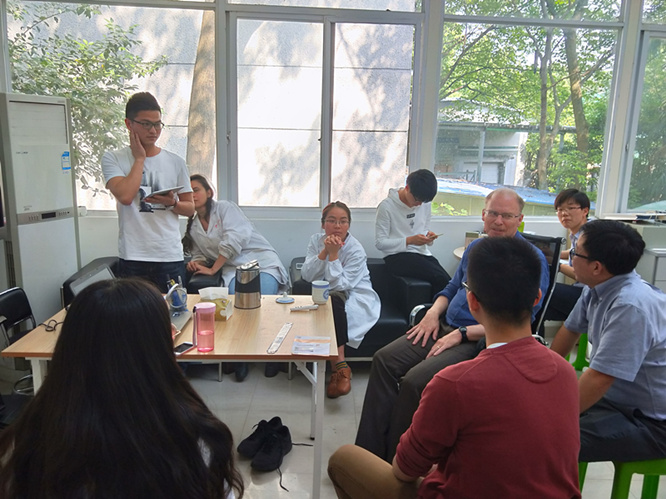Home » Collaborations and exchange
The Institute for Composites Science Innovation (InCSI) has started the collaboration with Prof. Rodney S. Ruoff at the Center for Multidimensional Carbon Material (CMCM) mainly focused on the training of joint PhD in the direction of carbon based materials since 2018.

Prof. Rodney S. Ruoff visited InCSI in Yuquan Campus, Zhejiang University
CMCM is one of the centers in the Institute for Basic Science (IBS) located in Ulsan National Insitute of Science and Technology (UNIST) with complete infrastructure and world class comprehensive conditions. IBS was established in November 2011 as a research institute funded by the Korean government to carry out pure basic scientific research. Its status in South Korea is similar to that of the Chinese Academy of Science. It possesses the most research and development funding among all Korean research institutions.
Prof. Rodney S. Ruoff is the Director of the center CMCM, which is consisted of three groups: materials group, synthesis group and theory group. Prof. Ruoff is the leader of materials group, his current research efforts are focused on
�� Synthesis, structure, and properties of novel materials including nanostructures and 2D materials;
�� Novel carbon materials (graphene, 2D diamond, diamond-including new routes to making diamond, nanotubes, sp3-sp2 hybrids, negative curvature carbon, carbon nanofoams, boron nitride allotropes, other advanced materials);
�� Fabrication and properties of composites and nanocomposites;
�� Instrument development and energy storage.
Besides, Prof. Ruoff is also the distinguished professor at department of Chemistry, Ulsan National Institute of Science and Technology (UNIST). Prof. Ruoff already has 470 Journal Pubs., 40 Conf. Pubs., 47 Patents, 8 Books Edited, 2 Book Chapters, and h-index=143 (Google Citation).
Considering CMCM group is focused on the basic science and our institute is devoted to engineering, the collaboration can largely promote the integration of theoretical research and application. Such as the synthesis and structure design of novel materials which can be used for the electromagnetic shielding and microwave absorbing; the fabrication of nanocomposites, especially the dispersion problem of the nanoparticles in epoxy could improve the property of large composite plate.

